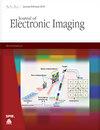Adaptive sparse attention module based on reciprocal nearest neighbors
IF 1
4区 计算机科学
Q4 ENGINEERING, ELECTRICAL & ELECTRONIC
引用次数: 0
Abstract
The attention mechanism has become a crucial technique in deep feature representation for computer vision tasks. Using a similarity matrix, it enhances the current feature point with global context from the feature map of the network. However, the indiscriminate utilization of all information can easily introduce some irrelevant contents, inevitably hampering performance. In response to this challenge, sparsing, a common information filtering strategy, has been applied in many related studies. Regrettably, their filtering processes often lack reliability and adaptability. To address this issue, we first define an adaptive-reciprocal nearest neighbors (A-RNN) relationship. In identifying neighbors, it gains flexibility through learning adaptive thresholds. In addition, by introducing a reciprocity mechanism, the reliability of neighbors is ensured. Then, we use A-RNN to rectify the similarity matrix in the conventional attention module. In the specific implementation, to distinctly consider non-local and local information, we introduce two blocks: the non-local sparse constraint block and the local sparse constraint block. The former utilizes A-RNN to sparsify non-local information, whereas the latter uses adaptive thresholds to sparsify local information. As a result, an adaptive sparse attention (ASA) module is achieved, inheriting the advantages of flexibility and reliability from A-RNN. In the validation for the proposed ASA module, we use it to replace the attention module in NLNet and conduct experiments on semantic segmentation benchmarks including Cityscapes, ADE20K and PASCAL VOC 2012. With the same backbone (ResNet101), our ASA module outperforms the conventional attention module and its some state-of-the-art variants.基于互惠近邻的自适应稀疏注意力模块
注意力机制已成为计算机视觉任务中深度特征表示的关键技术。它利用相似性矩阵,通过网络特征图中的全局上下文来增强当前特征点。然而,不加区分地利用所有信息很容易引入一些不相关的内容,从而不可避免地影响性能。为了应对这一挑战,稀疏化作为一种常见的信息过滤策略,已在许多相关研究中得到应用。遗憾的是,它们的过滤过程往往缺乏可靠性和适应性。为了解决这个问题,我们首先定义了一种自适应互惠近邻(A-RNN)关系。在识别邻居时,它通过学习自适应阈值获得灵活性。此外,通过引入互惠机制,确保了邻居的可靠性。然后,我们利用 A-RNN 修正传统注意力模块中的相似性矩阵。在具体实现中,为了区别考虑非本地信息和本地信息,我们引入了两个区块:非本地稀疏约束区块和本地稀疏约束区块。前者利用 A-RNN 来稀疏非本地信息,而后者则利用自适应阈值来稀疏本地信息。因此,自适应稀疏注意(ASA)模块继承了 A-RNN 的灵活性和可靠性优势。在验证所提出的 ASA 模块时,我们用它取代了 NLNet 中的注意力模块,并在包括 Cityscapes、ADE20K 和 PASCAL VOC 2012 在内的语义分割基准上进行了实验。在相同的骨干网(ResNet101)上,我们的 ASA 模块优于传统的注意力模块及其一些最先进的变体。
本文章由计算机程序翻译,如有差异,请以英文原文为准。
求助全文
约1分钟内获得全文
求助全文
来源期刊

Journal of Electronic Imaging
工程技术-成像科学与照相技术
CiteScore
1.70
自引率
27.30%
发文量
341
审稿时长
4.0 months
期刊介绍:
The Journal of Electronic Imaging publishes peer-reviewed papers in all technology areas that make up the field of electronic imaging and are normally considered in the design, engineering, and applications of electronic imaging systems.
 求助内容:
求助内容: 应助结果提醒方式:
应助结果提醒方式:


